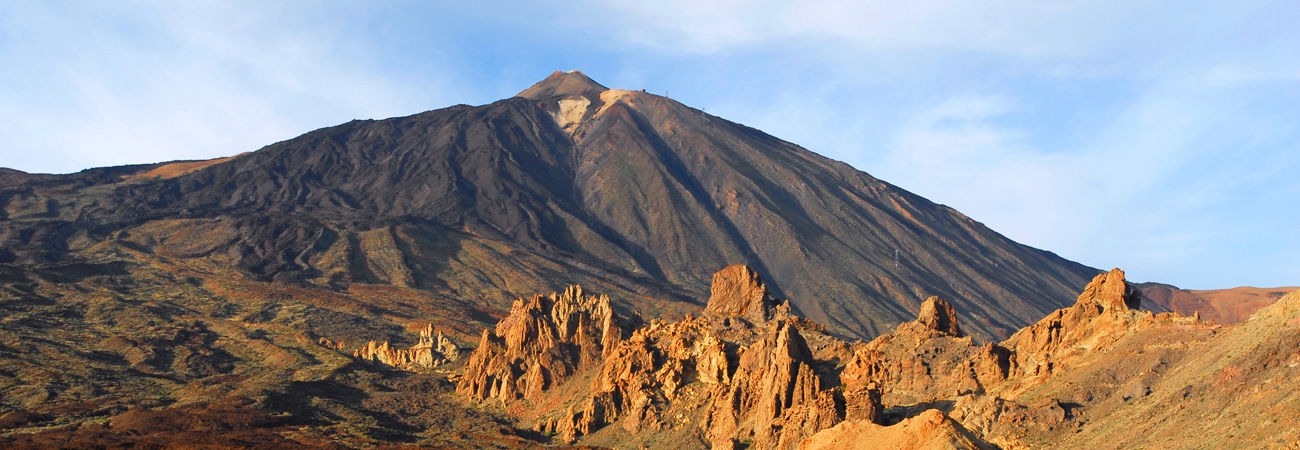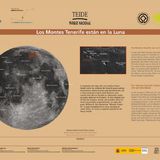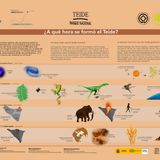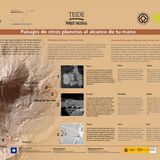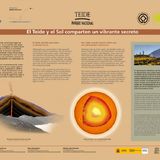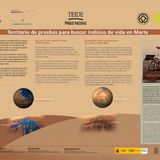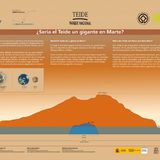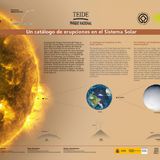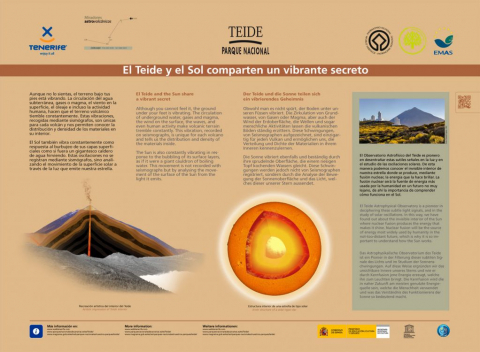Interpretive astro-volcanic tables
The Teide National Park has seven new interpretive astro-volcanic tables
Fruit of the active collaboration between the Cabildo Insular de Tenerife and the National Park in terms of sustainable tourism development, and thanks to the aid granted by the Ministry of Culture to conservation projects, protection and dissemination of assets declared World Heritage, seven new interpretive tables with astro-volcanic themes have been installed in the Teide National Park.
The Starlight Foundation and astrophysicists of the Astrophysics Institute of the Canary Islands (IAC) have collaborated in its execution.
The Teide National Park, declared World Heritage Site in 2007 by UNESCO in the category of Natural Site, has an important natural, landscape, cultural and historical value, at the same time that it has an increasing importance in astrotourism. With the placement of these tables, it is intended to link and make known its landscape and its intense relationship with astrophysical research and volcanism.
1. Mount Teide and the Sun share a vibrant secret. (Vantage Point Minas de San José).
2. Planetary landscapes close to home. (Vantage Point Minas de San José).
3. ¿At what time was El Teide formed? (Vantage Point Tabonal Negro).
4. The "Montes Tenerife" are on the Moon. (Vantage Point de La Ruleta - Roques de Garcia).
5. Test area in the search for signs of life on Mars. (Vantage Point Los Azulejos).
6. ¿Would El Teide be a giant on Mars? (Vantage Point Llano de Ucanca).
7. A catalogue of eruptions in the Solar System. (Parking Museo Juan Évora).
The "Montes Tenerife" are on the Moon
The "Montes Tenerife" are on the Moon. (Vantage Point de La Ruleta - Roques de Garcia).
In the mid-19th century the scientist Piazzi Smyth visited the peaks of Tenerife to make the first observations which would confirm, as maintained by the great Isaac Newton, that the higher the telescope, the better the view of the Universe. The site chosen was at Alto de Guajara, where the walls of the original observatory can still be seen. A century later, William R. Birt gave the name "Montes Teneriffe" to some mountains on the Moon, close to the Plato crater, in honour of Piazzi Smyth's expedition.
¿At what time was El Teide formed?
¿At what time was El Teide formed? (Vantage Point Tabonal Negro).
Our species, Homo sapiens, took its first steps in Africa some 200,000 years ago. The volcanic eruptions which gave rise to the formation of El Teide began 50,000 years later. These figures are insignificant when compared to the age of the Universe, which is estimated to be an astonishing 13,700,000,000 years old. To imagine the scale of these numbers, let's condense the history of the Universe into 24 hours.
Planetary landscapes close to home
Planetary landscapes close to home. (Vantage Point Minas de San José).
A short trip through different parts of El Teide National Park can give you a good idea of what you would find if you visited other rocky spots in the Solar System, such as the Moon, Mars or Venus. You won't need a bulky spacesuit to protect you from being boiled or squashed by the high temperature or extreme pressure in a question of seconds. El Teide is the ideal place to stroll through other planets in your shirtsleeves!
Mount Teide and the Sun share a vibrant secret.
Mount Teide and the Sun share a vibrant secret.
Although you cannot feel it, the ground under your feet is vibrating. The circulation of underground water, gases and magma, the wind on the surface, the waves, and even human activity make volcanic terrain tremble constantly. This vibration, recorded on seismographs, is unique for each volcano and tells us the distribution and density of the materials inside. The Sun is also constantly vibrating in response to the bubbling of its surface layers, as if it were a giant cauldron of boiling water. This movement is not recorded with seismographs but by analysing the movement of the surface of the Sun from the light it emits.
Test area in the search for signs of life on Mars
Test area in the search for signs of life on Mars. (Vantage Point Los Azulejos).
Los Azulejos is a unique natural laboratory where scientists from all over the world test methods to detect the presence of water –and possibly, life– in the geological past of planets of volcanic origin. There is clear evidence that billions of years ago Mars experienced intense volcanic activity and may have had liquid water on its surface, which means that it is not impossible that it also had life. When water comes into contact with volcanic rock it leaves clear signs of physical and chemical changes. Any life form that colonised the rocks would also leave a chemical footprint.
¿Would El Teide be a giant on Mars?
¿Would El Teide be a giant on Mars? (Vantage Point Llano de Ucanca).
El Teide is the third largest volcanic structure on planet Earth. But it is dwarfed by the largest volcano in the Solar System, Olympus Mons, on Mars. Here on Earth, the movement of the surface layers causes the lava eruption points to move over time, giving rise, for example, to the formation of the Canary Islands. On Mars, however, the point of eruption remains in the same place for much longer, thereby forming gigantic volcanoes.
A catalogue of eruptions in the Solar System
A catalogue of eruptions in the Solar System. (Parking Museo Juan Évora).
The landscape of El Teide National Park is the result of innumerable volcanic eruptions which have taken place over hundreds of thousands of years. This is not exclusive to Earth, but is also seen on other planets such as Mars or Venus. There are even some which are still active, such as the volcanoes on Io, a moon of Jupiter. However, there are many types of eruption in the Solar System, of different sizes and with different types of material expelled. There are extremely high temperature gas emissions on the Sun, and eruptions of very low-temperature ice and water, such as those on Enceladus, a moon of Saturn.







